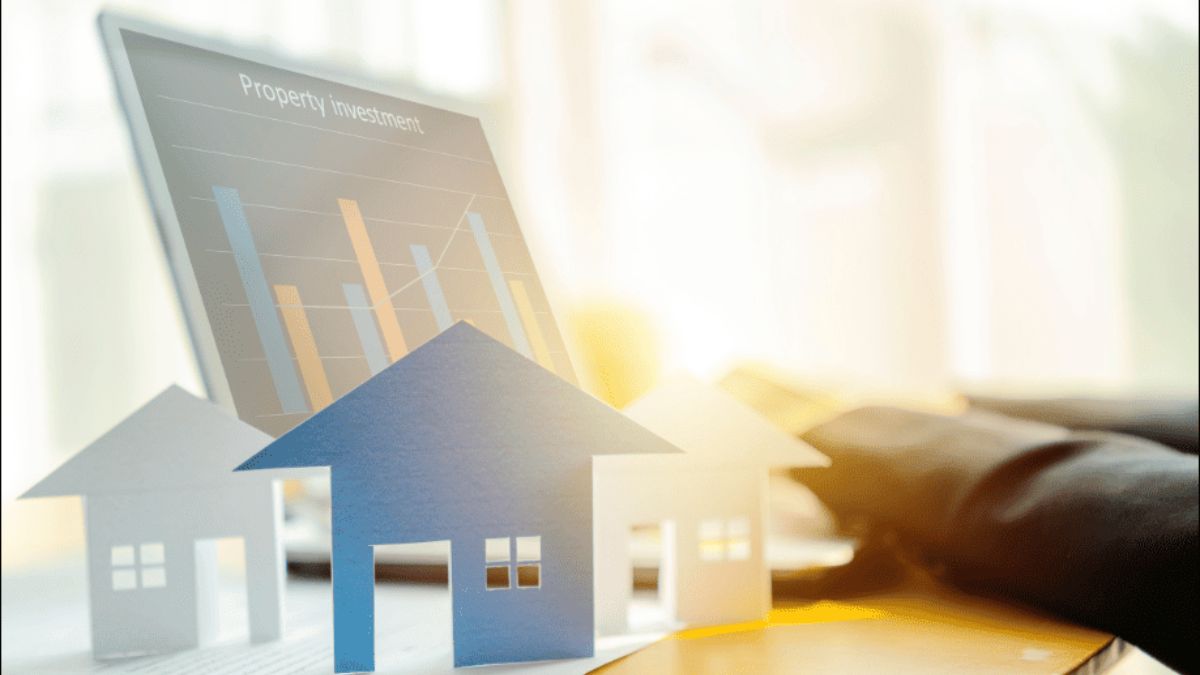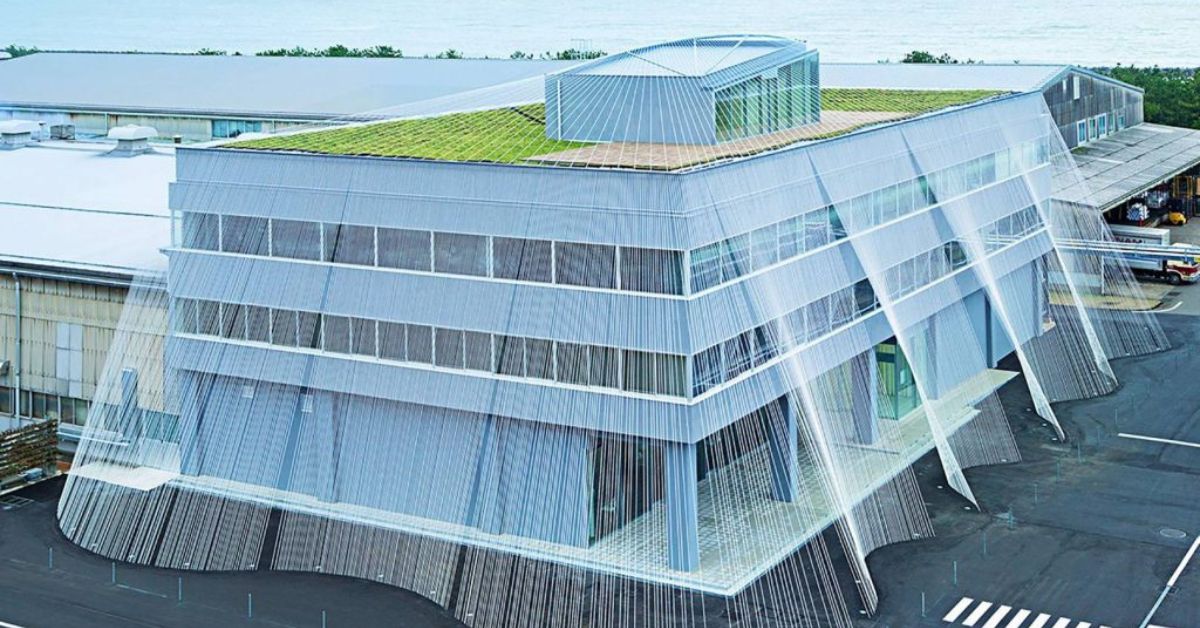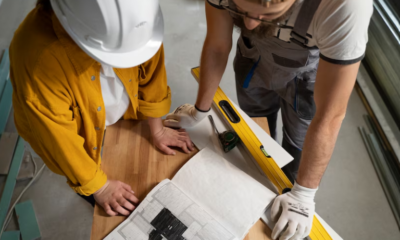REAL ESTATE
Understanding Commercial Real Estate Loans for Medical Office Spaces

Succeeding in the healthcare industry as a medical professional requires more than just providing excellent patient care. It also involves strategic financial planning, especially in securing a suitable location for your practice. In such cases, commercial real estate loans for medical office spaces can be highly beneficial, offering a tailored solution for those in the medical field. Unlike generic commercial loans, they cater to the specific demands of the healthcare sector, considering factors like patient accessibility, regulatory compliance, and advanced medical equipment requirements. For physicians aiming to either kickstart a new venture or grow an existing practice, these specialized loans are not just a financial tool but a strategic step toward achieving long-term success.
Understanding Loan Types for Medical Offices
Choosing the right type of loan for a medical office requires you to understand the various options available, each with its unique pros and cons. Here is a comprehensive division of loan types with their pros and cons:
- Traditional Loans
- Cons: They can be challenging to obtain, especially for new practices without established financial histories. They’re also not ideal for quick access to funds due to longer processing times.
- Pros: These loans are generally more cost-effective over the long term. Many lenders offer specialized products tailored for medical professionals, often showing leniency towards student loan debt.
- SBA Loans
- Cons: The application process for SBA loans can be lengthy, with an extended underwriting process delaying access to capital.
- Pros: They offer high capital amounts, usually with lower interest rates and longer repayment terms, making them suitable for significant investments.
- Business Lines of Credit
- Cons: They might come with various fees and extra charges, which can add up. They’re not the best choice for one-time, large-scale investments.
- Pros: These lines of credit charge interest only on the funds used. They offer flexible repayment terms and quick access to funds, making them ideal for ongoing operational expenses.
- Short-Term Loans
- Cons: These loans typically have shorter repayment terms and higher average interest rates. They are rarely specifically tailored for medical providers.
- Pros: The application and funding process is swift, with looser criteria for approval, making them suitable for immediate financial needs or emergencies.
Understanding these differences can help you make informed decisions about financing your practice and avoid money mistakes almost everyone makes. It ensures you choose a loan that suits your needs and financial situation.
The Significance of Commercial Real Estate Loans for Medical Office Spaces
Commercial real estate loans for medical office spaces are essential for expanding healthcare services and providing numerous benefits to physicians and healthcare providers. Here’s a breakdown:
- Enabling Expansion: These loans allow you to broaden your reach by financing new or additional office spaces, thus catering to more patients and communities.
- Modernizing Facilities: They offer the financial means to update existing medical offices with advanced equipment and technology, enhancing patient care.
- Improving Accessibility: By supporting the acquisition of strategically located properties, these loans help make healthcare services more accessible to diverse populations.
- Long-term Investment: Investing in real estate through these loans is a strategic long-term investment. It contributes to the growth and stability of medical practice, ensuring that healthcare providers have a tangible asset that will be appreciated over time. The unique landscape of Miami, for example, known for its robust tourism industry, provides remarkable opportunities for medical practices. Doctors can take advantage of the growing medical tourism trend by investing in commercial real estate in Miami, attracting patients from around the world.
Key Factors to Consider When Applying for Loans
You should focus on several critical factors when applying for commercial real estate loans for medical office spaces. Your credit score is essential here; it reflects your financial responsibility and influences loan approval and terms. In addition to that, your business history comes into play. A proven management track record and profitability instill confidence in lenders regarding your loan-handling capabilities. You should also give special attention to crafting a detailed repayment plan. This plan should be realistic and align with the financial projections of your practice. Equally important is a solid business plan. It should detail the growth potential of the medical practice you own, including projected revenues and plans for expansion. These components are vital to a successful loan application, helping you secure the necessary funds to expand or establish your medical practice.
Navigating Interest Rates and Loan Terms
Understanding the difference between fixed and variable interest rates is crucial when securing a loan for your medical practice. Fixed rates remain constant throughout the loan, offering predictability in monthly payments. This stability is particularly beneficial when budgeting for long-term financial planning. On the other hand, variable rates can fluctuate based on market conditions. While they may start lower than fixed rates, there is a risk of increase over time, which could affect your repayment amount.
Gaining favorable loan terms and reducing costs requires practical negotiation skills. Your should always come prepared, armed with thorough research about current market rates and a clear understanding of your financial health. You should also consider the length of the loan term. A longer term can mean lower monthly payments but more interest over time, whereas a shorter term increases monthly payments but reduces the total interest paid.
The Application Process Simplified
Applying for a commercial real estate loan can seem intimidating, but breaking it down into steps simplifies the process. Here is how I would go about it:
- Gather all necessary documents, including financial statements, business plans, and credit reports. This preparation shows lenders you are earnest and well-organized.
- Research which lender best fits your needs, considering factors like interest rates, loan terms, and additional fees.
- Submit a detailed application. It includes outlining your business goals and how the loan will help achieve them.
- To reassure the lender of your ability to repay the loan, you need to explain the profitability and growth potential of your practice.
- Prepare for the interview with the lender.
- Stay proactive throughout the process, following up with the lender and being ready to provide additional information if required.
The Impact of Location and Demographics
Lenders often assess the property value based on location. Also, they consider factors like accessibility, visibility, and the economic health of the surrounding community. A prime location in a thriving area typically results in more favorable loan conditions, reflecting the lower risk associated with a potentially successful business venture.
Demographics play a crucial role in choosing a suitable medical office space. Understanding the population’s age, income levels, and healthcare needs in the area helps tailor services effectively. A location surrounded by a demographic that matches the specialty of your medical practice can lead to higher patient volume and, consequently, better business performance. Careful analysis of these factors ensures that the chosen location aligns perfectly with your practice’s goals and the lender’s expectations.
Avoiding Common Pitfalls in Loan Acquisition
Avoid common pitfalls in acquiring commercial real estate loans for medical office spaces for a smooth application process. Common pitfalls may be:
- Underestimating Required Documentation: To avoid this, prepare all financial statements, business plans, and credit reports in advance.
- Overlooking Credit History: Ensure that your credit report is accurate and address discrepancies before lenders review it.
- Lacking a Clear Business Plan: Prepare a well-thought-out plan that will demonstrate the viability and future profitability of the practice.
- Choosing the Wrong Loan Type: Research different loan types and choose one that aligns with your requirements and financial situation.
- Failing to Compare Lenders: Compare multiple lenders to find the best rates and terms.
Conclusion
Securing commercial real estate loans for medical office spaces involves understanding different loan types. It also means preparing for the application process and knowing how location and demographics influence your choice. The right loan can transform your dream of owning a medical office space into reality. Thoroughly research and consider all the factors, as they are crucial in navigating the path to successfully financing your medical practice.
REAL ESTATE
Before You Renovate: Structural Pre-Inspection Checklist for Homeowners

Renovating your home can be an exciting venture, but it also comes with its set of challenges, especially when it involves the structural integrity of the building. Before you embark on transforming your space, a structural pre-inspection is crucial to ensure the safety and success of your renovation project. This checklist provides you with a comprehensive guide to assessing key structural aspects of your home with insights into how ProStruct can assist during this vital phase.
Understanding the Importance of Structural Pre-Inspection
A structural pre-inspection, integral to any renovation, involves a thorough examination of your home’s foundation, walls, beams, and other structural components. This inspection identifies any underlying issues that could affect the renovation’s feasibility or final outcome. Engaging experts like ProStruct ensures that your renovation rests on a safe, stable foundation.
Why Pre-Renovation Inspections are Critical
Renovations, particularly those that alter the layout or involve structural changes, can lead to unforeseen complications if existing issues are not identified beforehand. A structural analysis renovation ensures that the load-bearing walls are stable, no hidden water damage threatens the building’s integrity, and the existing structure can support new additions or alterations.
Key Elements of a Structural Pre-Inspection Renovation Checklist
When planning a renovation, your checklist should comprehensively cover all structural aspects that might impact your project. Here’s what to include:
1. Foundation Assessment
Ensure that there are no cracks, uneven settling, or moisture issues in your foundation. These could signify deeper structural problems that might require immediate attention before proceeding with renovations.
2. Roof and Attic Examination
Inspect the roof and attic for signs of distress, such as trusses or rafters that are misaligned or compromised. These areas can impact the overall structural stability of your home.
3. Wall and Flooring Integrity
Check walls for cracks or movement and floors for levelness and sturdiness. These elements are crucial for maintaining the structural integrity of the house during and after the renovation.
4. Basement and Crawlspace
Look for any water intrusion, mold growth, or structural decay in these areas. Issues here can spread to other parts of your home and cause major damage.
5. Load-Bearing Structures
Identify all load-bearing walls and structures. Any renovation that involves altering these areas must be done with utmost care to avoid compromising the building’s stability.
How ProStruct Can Help
At ProStruct, we specialize in structural inspections and evaluations designed specifically for renovation projects. Our team provides detailed structural reports, includes accurate calculations, and assesses potential impacts of planned changes on your home’s structure. Whether you need a foundation evaluation, wall inspection, or a comprehensive framing inspection, ProStruct ensures your renovation is planned on a solid structural base.
Services Offered by ProStruct:
- Plan Review and Structural Design: Before any renovation, having architectural plans reviewed by a structural engineer ensures compliance and safety.
- Site Inspections and Reports: Detailed inspections assess every aspect of your home’s structural integrity.
- Lateral Load Assessments: These are critical in areas prone to earthquakes or heavy winds, ensuring your home can withstand these forces.
Preparing for a Structural Pre-Inspection
To prepare for a structural pre-inspection:
- Clear Access: Ensure that all areas of your home are accessible for thorough inspection.
- Document Concerns: Note any visible issues or past problems and share these with your inspector.
- Consult a Professional: Structural engineering is complex and requires professional assessment. Consulting experts like ProStruct minimizes risks and pinpoints necessary repairs and modifications.
Considering a renovation project should begin with a detailed understanding of the current state of your home’s structure. A structural pre-inspection renovation checklist is a vital tool in planning and conducting renovations safely and effectively. With professional guidance from ProStruct, you can proceed confidently, knowing that your home is structurally sound and ready for its transformation.
Are you ready to ensure your renovation starts on the right foundation? Contact us today! to discuss your structural pre-inspection needs.
REAL ESTATE
Hurricane & Earthquake-Resistant Designs: New Engineering Techniques for High-Risk Zones

The U.S. construction industry faces growing challenges from natural disasters like hurricanes and earthquakes. Contractors and material suppliers must adapt to new engineering techniques that enhance building resilience in high-risk areas. With climate change increasing storm intensity and seismic activity, innovative designs are no longer optional—they’re essential.
Why Disaster-Resistant Construction Matters
Hurricanes and earthquakes cause billions in damages every year. For contractors and material suppliers, building resilient structures means:
– Reducing repair costs for property owners.
– Meeting stricter building codes in disaster-prone states.
– Improving safety for occupants.
New engineering techniques are making it easier to construct buildings that can withstand extreme forces.
Hurricane-Resistant Construction Techniques
- Wind-Resistant Roofing & Wall Systems
Hurricanes produce powerful winds that can tear off roofs and collapse walls. Contractors now use:
– Hurricane straps & clips – Metal connectors that reinforce roof-to-wall joints.
– Impact-resistant shingles – Made from polymer-modified asphalt to resist wind uplift.
– ICF (Insulated Concrete Forms) – Foam blocks filled with concrete for stronger walls.
- Flood-Proof Foundations
Storm surges and heavy rains lead to flooding. Solutions include:
– Elevated foundations – Raising homes on piers or stilts in flood zones.
– Permeable pavements – Allowing water drainage to reduce pressure on structures.
For outdoor projects, landscaping estimating services can help design drainage systems that prevent erosion and structural damage.
Impact-Resistant Windows & Doors
Flying debris is a major hazard. Contractors now install:
– Laminated glass – Holds together even when shattered.
– Storm shutters – Roll-down or accordion-style for added protection.
Earthquake-Resistant Construction Techniques
- Base Isolation Systems
This technique separates the building from ground movement using:
– Lead-rubber bearings – Absorb seismic energy.
– Sliding isolators – Allow the building to move independently of shaking ground.
- Reinforced Shear Walls & Cross Bracing
Steel and concrete reinforcements prevent collapse by:
– Shear walls – Thick walls that distribute seismic forces.
– Cross bracing – Diagonal steel beams for extra stability.
- Flexible Pipe & Utility Systems
Earthquakes can rupture gas and water lines. New solutions include:
– Swing joints – Allow pipes to bend without breaking.
– Automatic shutoff valves – Prevent gas leaks after a quake.
How Material Suppliers Can Support Resilient Construction
Suppliers play a key role by providing:
– High-strength concrete – For foundations and shear walls.
– Fiber-reinforced polymers (FRP) – Lightweight but strong alternative to steel.
– Seismic-resistant fasteners – Bolts and connectors that withstand shaking.
For large-scale projects, landscape estimating services ensure proper material calculations for retaining walls and other outdoor reinforcements.
The Future of Disaster-Resistant Construction
New trends include:
– Self-healing concrete – Repairs cracks automatically.
– AI-powered structural monitoring – Detects weaknesses before disasters strike.
– Modular construction – Prefab designs that meet strict resilience standards.
Conclusion
Contractors and material suppliers must stay updated on hurricane and earthquake-resistant techniques to build safer, longer-lasting structures. From wind-resistant roofing to seismic base isolators, innovation is transforming disaster-prone construction.
For outdoor projects, partnering with landscaping estimating services ensures accurate planning for resilient landscapes. By adopting these methods, the construction industry can reduce risks and protect communities from nature’s worst.
Final Note:
– Use landscape estimating services for precise material planning.
– Consult landscaping estimating services for drainage and erosion control in high-risk zones.
This approach keeps projects on budget while meeting safety standards. Stay ahead—build stronger!
REAL ESTATE
Supply Chain & Material Innovations: Onshoring Construction Materials

The U.S. construction industry is undergoing major changes due to supply chain disruptions, rising material costs, and the push for sustainability. Contractors and material suppliers are now focusing on onshoring construction materials—bringing production back to the U.S. to reduce delays and costs. At the same time, new material innovations are transforming how projects are built.
Why Onshoring Construction Materials Matters
For years, the U.S. construction industry relied heavily on imported materials like steel, lumber, and cement. However, global supply chain issues—such as shipping delays, tariffs, and geopolitical conflicts—have made imports unreliable and expensive.
Key Benefits of Onshoring:
✔ Faster Deliveries – No more waiting months for overseas shipments.
✔ Lower Costs – Reduced shipping and tariff expenses.
✔ Better Quality Control – U.S.-made materials often meet stricter standards.
✔ Supporting Local Economies – More jobs for American workers.
Many contractors now prefer suppliers who source materials locally, ensuring smoother project timelines. Accurate construction takeoff services help them plan better by estimating material needs early, avoiding last-minute shortages.
Material Innovations Changing Construction
While onshoring solves supply chain problems, new materials are making construction faster, stronger, and greener. Here are some breakthroughs:
- Mass Timber & Engineered Wood
Instead of traditional steel and concrete, builders are using cross-laminated timber (CLT)—a strong, lightweight, and sustainable alternative. It’s easier to transport and install, cutting project timelines.
- Self-Healing Concrete
Cracks in concrete can weaken structures. New self-healing concrete uses bacteria or special polymers to repair itself, extending a building’s lifespan.
- Recycled & Sustainable Materials
From recycled plastic bricks to low-carbon cement, eco-friendly materials help contractors meet green building codes while reducing waste.
- Graphene-Enhanced Materials
Graphene—a super-strong nanomaterial—is being mixed into concrete and steel, making them lighter yet more durable.
With these innovations, takeoff estimating services become crucial. They help contractors calculate exact material quantities, preventing waste and saving money.
How Contractors & Suppliers Can Adapt
- Partner with Local Suppliers
By sourcing materials within the U.S., contractors avoid import risks. Suppliers investing in domestic production will have a competitive edge.
- Use Digital Tools for Better Planning
Tools like construction takeoff services allow precise material measurements, reducing over-ordering and delays.
- Stay Updated on New Materials
Contractors who adopt innovative materials early can bid on more projects, especially those requiring sustainable solutions.
- Improve Inventory Management
With onshoring, lead times shorten, but contractors still need efficient tracking. Cloud-based software helps manage stock levels in real time.
The Future of U.S. Construction
The shift to onshoring construction materials is more than a trend—it’s a necessity. Paired with cutting-edge materials and smart planning tools like takeoff estimating services, contractors and suppliers can build faster, cheaper, and greener.
As demand grows for resilient and sustainable construction, those who embrace these changes will lead the industry.
Final Thoughts
The U.S. construction industry is evolving rapidly. By bringing material production back home and adopting new technologies, contractors and suppliers can overcome supply chain challenges. Tools like construction takeoff services ensure projects stay on budget and schedule.
-

 TECHNOLOGY2 years ago
TECHNOLOGY2 years agoElevating Game Day Eats: A Guide to Crafting Crowd-Pleasing Sliders
-

 ENTERTAINMENT2 years ago
ENTERTAINMENT2 years agowave_of_happy_: Your Ultimate Guide
-

 FASHION2 years ago
FASHION2 years agoGPMsign Fashion: Redefining Style with Purpose
-

 TECHNOLOGY1 year ago
TECHNOLOGY1 year agoTrader Joe’s Dayforce: Revolutionizing Workforce Management
-

 FOOD2 years ago
FOOD2 years agoAltador Cup Food Court Background: A Culinary Extravaganza Unveiled
-

 HOME IMPROVEMENT1 year ago
HOME IMPROVEMENT1 year agoWhat Kitchen Renovation Companies Offer Beyond Basic Remodeling
-

 SPORTS2 years ago
SPORTS2 years agoScore Chaser Sporting Clays: A Thrilling Pursuit of Precision
-

 NEWS2 years ago
NEWS2 years agoNyl2 Kemono: Unveiling the World
